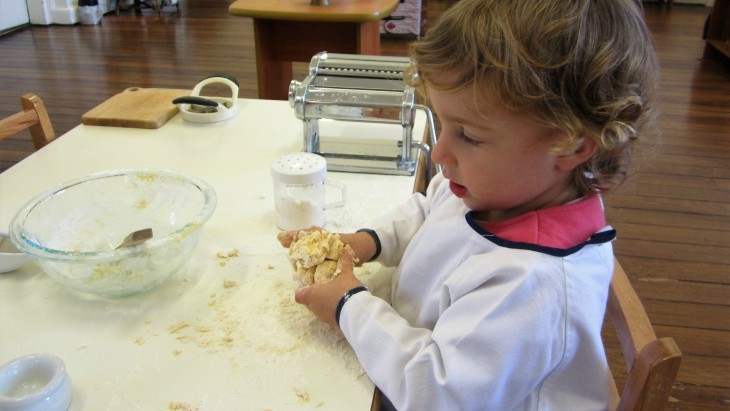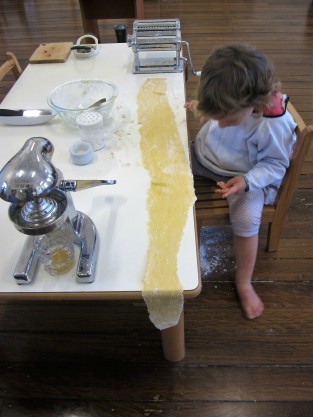Cooking With Kids - How To Make Pasta
- All Ages

By Hayley Dean, ellaslist
So, it’s a cold raining day or perhaps it’s too darn hot to go outside or you just want to teach your lovely children some fabulous life skills? Well today wells like the perfect day for pasta. Now before you roll your eyes at me, teaching your kids to make pasta is as easy and as simple as baking muffins together and I know your kids are going to love it. Yes, it’s going to get messy and hey, that’s ok.
I picked up a second-hand basic (hand cranked) pasta maker machine off a Facebook Buy, Swap and Sell group. It’s actually brand new, an unwanted gift the seller never used. Generally, they do cost anywhere from $50 - $200 in store. A basic one is all you need, in fact, you can even go without by simply rolling the pasta out with a rolling pin and cut into noodles with a sharp knife of cookie cutter.
It’s so cheap and so quick to make.
As shown in this photo, its actually something children as young at 18 months learn to do at Montessori Parent Toddler Program at Inner Sydney Montessori School!

Ingredients:
4 Eggs
2 ½ cups of Plain Flour
½ teaspoon Salt
Method:
Follow these 3 simple instructions from the Taste website:
- Have your kids sift the flour and salt together onto a clean work surface, then using their hands to shape the flour into a mound. Make a well in the centre. Place the eggs in the well and use a fork to lightly whisk. It’s best to use the tips of your fingers to gradually blend in a little flour into the egg mixture until it forms a dough.
- Kids love this bit as its messy and gooey and feels so fun between their fingers! Firmly knead the dough by using the heel of your hand to firmly push down into it and then away from you, then lift the dough with your fingertips and fold it back on itself towards you. Turn and repeat. Continue kneading the dough for 6-7 minutes or until smooth and elastic. Might be best to take turns here so little arms don’t get too tired. Divide the dough into 4 equal portions and wrap each portion in plastic wrap or cover with a clean, damp tea towel to prevent the dough from drying out. Set aside for 10 minutes to rest.
- Attach a pasta machine to the side of a workbench and adjust the machine's rollers to the widest setting. Make sure it’s at a workable height for your children. Spread about 4 clean, dry tea towels over the work surface close to the pasta machine. Unwrap a portion of dough and use the palm of your hands to flatten it into a rectangle. Dust the rollers with flour and roll the dough portion through. Dust again with flour and repeat on the same setting.
- Reduce the width between the rollers by 1 and roll the dough through as before. Repeat the process, reducing the setting each time until the dough is 1-1.5mm thick. The settings on all pasta machines vary. The last setting on some machines may roll the dough too thin, resulting in it sticking to the rollers and tearing. So be careful to only reduce the setting and roll the dough until it reaches the desired thickness. Your kids as young as 2 should have no problems using the handle and rolling out the pasta.
- Spread the pasta sheet over the clean tea towels. When laying out the pasta sheets, they must not touch or overlap each other as the moist pasta will stick together. Set the pasta sheets aside for 10-15 minutes (depending on the temperature in your kitchen) or until dry enough not to stick together but pliable enough not to crack. Trim the edges of the pasta. Cut into 14 x 25cm pieces to make lasagne sheets or see step 6 to make fettuccine.
- To cut the pasta into fettuccine by hand, loosely roll up a pasta sheet starting from the shortest end. Trim the ends and discard. Use a sharp knife to cut the pasta crossways at 5mm intervals. Unravel the pasta. To cut pasta into fettuccine using the pasta machine, you will need a fettuccine cutting attachment. Fit the machine with the attachment and feed the pasta sheets, one at a time, through the fettuccine attachment. Cook immediately or store individual portions as loose nests.



Reviews


